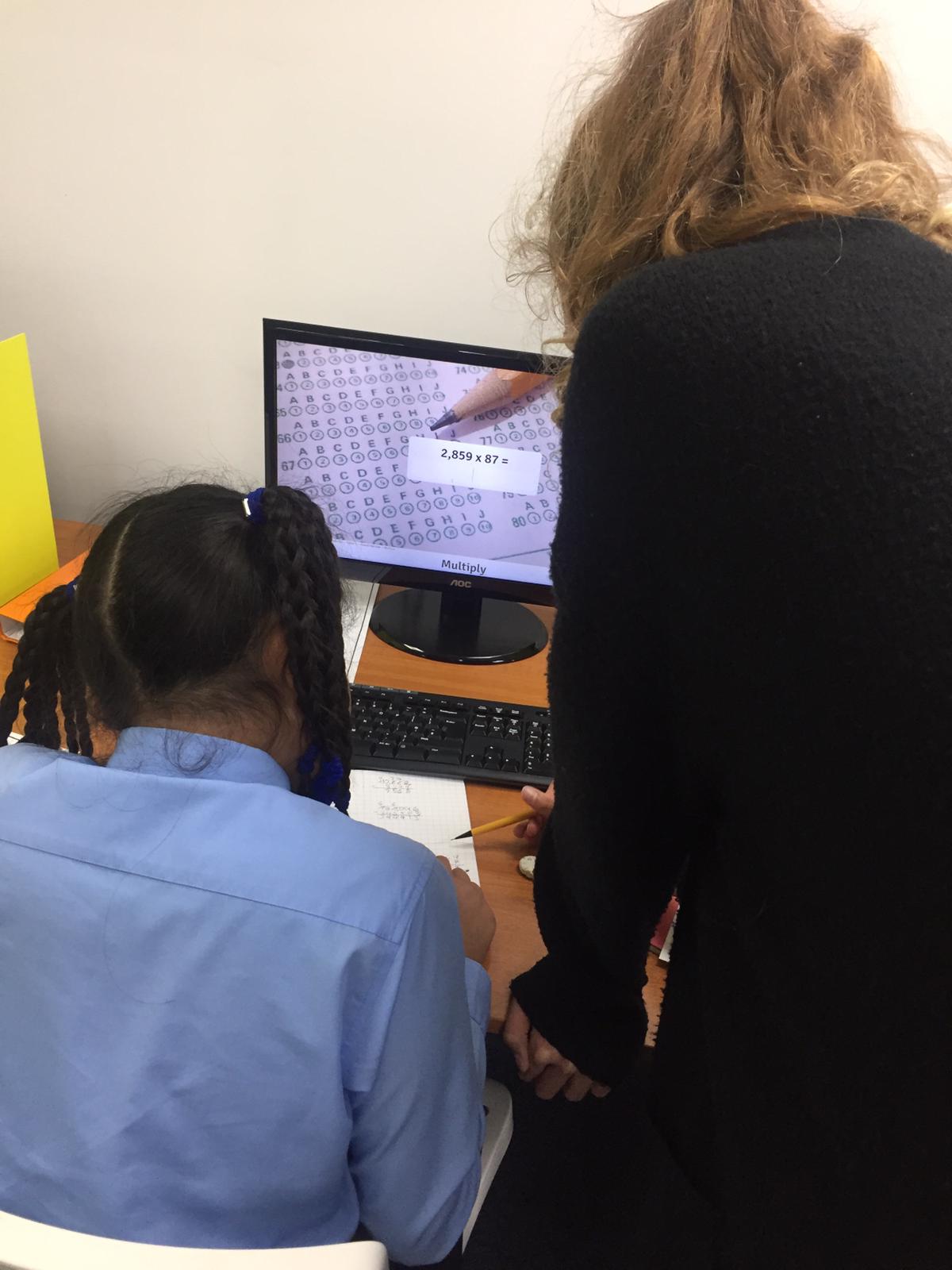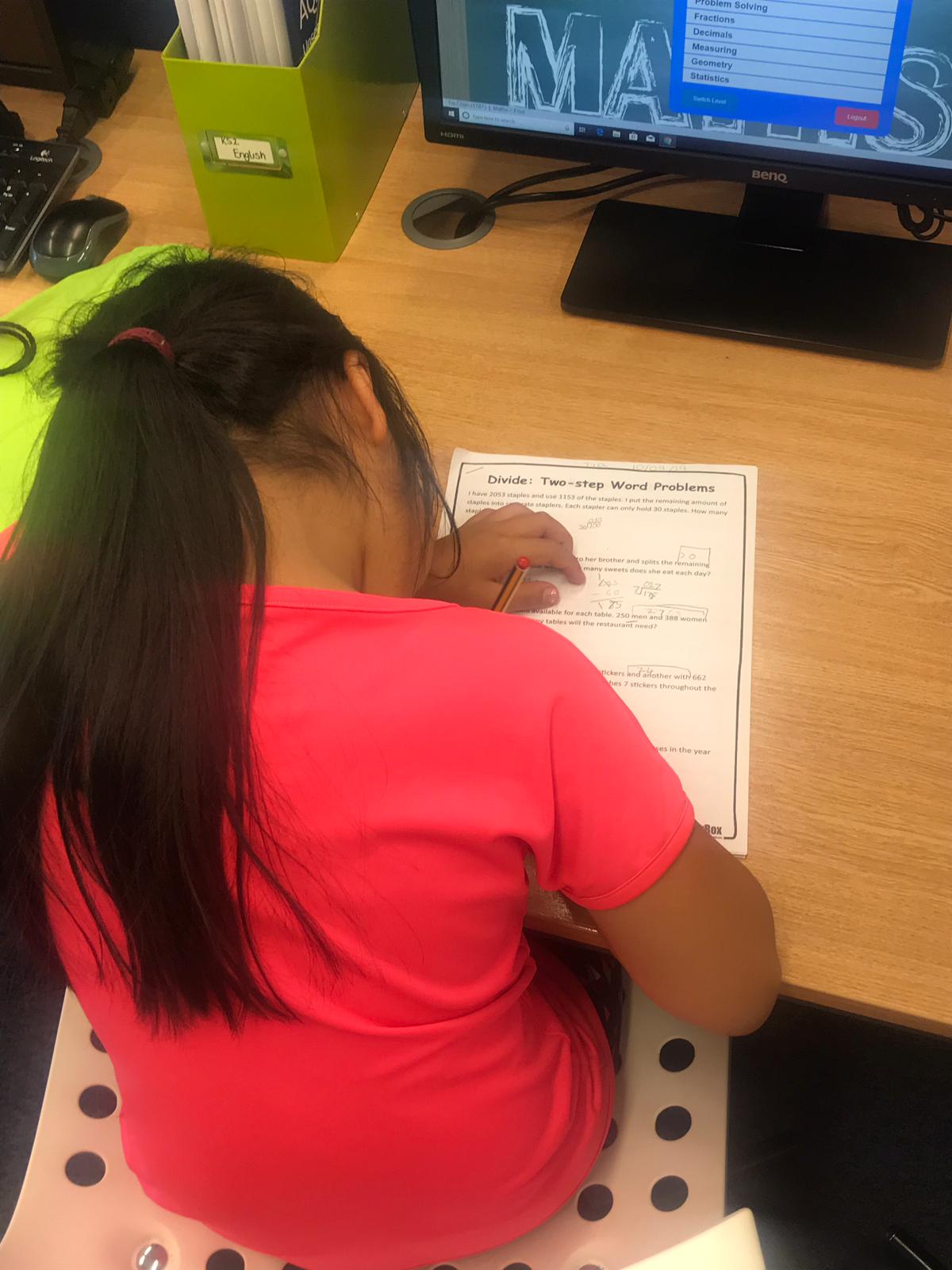3 top tips to prevent procrastination

ween WhWe are all guilty of procrastinating from time to time, it’s in our nature. But children can be especially prone to procrastination, sometimes without being aware of it. There are many reasons why we procrastinate. It could be because the task we are completing is tricky or because we aren’t engaged in what we are doing.
In order to stop your child from getting distracted when completing homework or revision, first you must try to address the reason why it is happening.
Try these 3 top tips to prevent procrastination:
Create a learning environment
By dedicating a space for learning, your child will associate this place with being productive.
This can involve removing all electronics that won’t be useful for the task that they are doing, i.e. tablets and smartphones. By doing so, you eliminate distraction and your child can get their work done quicker.
Ensure they have everything they need in their learning space, so they don’t have to get up often and procrastinate. This includes stationary, a computer, textbooks, a notepad, and so on.
It will help if this space is quiet, so a desk in a room to themselves would be beneficial, so the noise isn’t disrupting.
Set a time for completing work
To ensure your child is fully productive, set a realistic time limit for them to complete their work.
By putting this slight pressure on them, they won’t take hours and distract themselves or make the task longer than it needs to be.
You can check up on your child during the time set and see how they are getting on with their work.
By setting a time for work it helps to establish a productive routine. It is also good practice for when children sit tests at school and have a time limit to complete it.
Create a list of priorities
Sometimes it can be overwhelming when there are a lot of tasks to complete at once.
By creating a list with your child, they can visualise what needs to be done and check off each task once complete.
Write the list of tasks in order of importance, so the most important one is completed first. Once this has been done, your child can make their way through the tasks until they are complete.
World Teachers’ Day

The 5th October 2020 is World Teachers’ Day. Today celebrates the importance of teachers across the globe and recognises their hard work.
What is World Teachers’ Day?
The annual day of teacher recognition first started by the United Nations Educational, Scientific and Cultural Organisation (UNESCO) in 1994. This year’s theme is “Teachers: Leading in crisis, reimagining the future.” This is because the COVID-19 pandemic has had a major impact on education systems worldwide. It has added to the responsibilities that teachers face on a daily basis. They have had to adapt to remote learning, support vulnerable students, work in the classroom during the pandemic and ensure students aren’t falling behind in their education.
The importance of teachers
Teachers are an influential role model in many lives. I’m sure every one of us has had a favourite teacher who has positively impacted their learning in some way or another. Whether it’s teaching a challenging concept, sharing their passion for a subject, or simply being there for their students, take today to reflect on the importance of teachers.
How to celebrate
World Teachers’ Day is celebrated this year with a week of virtual events which will finish on the 12th October. You can celebrate remotely by watching the events online, as well as reminiscing about your favourite teachers!
How do children develop thinking and learning skills?

Children learn through doing and playing, which builds their brain
development.
These connections are called neutral pathways. This is why
it’s important for children to repeat what they learn. This way the neutral
pathways become stronger. So, how do children develop thinking and
learning skills?
Children are constantly learning new skills at their own pace. They go
through different stages of development. Once children learn the basics of
one area, it is easier for them to expand on that area, building upon their
knowledge.
How children develop thinking and learning skills:
Processing information
There is certainly no one-size-fits-all with learning. This is why it is useful
to teach children in different ways. Some may be auditory learners, who
learn best when there is music playing or background noise. While others
may learn by doing, remembering more through a hands-on approach.
Teaching children that there are different methods of processing
information will help each individual to grasp it in their own way.
Thinking skills
Encourage your child to be curious and explore new ways of thinking. Try
to ask them how they reached a certain conclusion by asking “why?”
Similarly, get your child to go beyond “what?” and instead question
“why?” and “how?” This will open up a new discussion and let them
actively think about what they are asking. It is also worth teaching your
child that it is okay to agree and disagree with things. If they don’t
understand or support someone’s statement, let them know that they can
ask more about it. Then they can form their own opinion on the subject
and provide a reason for thinking this way.
Problem solving
Thinking critically about information and scenarios children are presented
with will help them come to their own conclusions. This way of thinking
requires a lot of thought and analysis. It will encourage children to think
for themselves and challenge things more.
5 essential life skills to teach your child

In order to help your child constantly learn and grow, it is important to teach them life skills from a young age. There are 5 essential life skills to teach your child that are particularly useful for them to learn.
Starting to learn those all important life skills early on will strengthen their mindset and help to become more resilient. Learning executive function skills will benefit your child in education and in their everyday life.
Here are 5 essential life skills to teach your child:
Focus and self-control
Learning how to focus will help your child to achieve their goals. Self-control is about teaching your child to stay disciplined. This is particularly useful to practice when revising and completing homework. It will allow your child to complete the task they are set without distraction or procrastinating.
Perspective taking
Perspective taking is about seeing other people’s viewpoints and understanding how others think and feel. It is an important life skill because it allows your child to see beyond their own thoughts and feelings, helping them to become more openminded.
Communication
Being and effective communicator is a highly important life skill. It helps the way your child expresses themselves, improves their social skills and benefits academia. Communication will come in handy later in life for interviews, essay writing and public speaking.
Critical thinking
This skill teaches children to think for logically for themselves. By teaching your child how to think, encourage them to go beyond asking “what? and encourage them to ask “how?” and “why?” It will open up a new discussion and widen their understanding.
Taking on new challenges
In order to constantly learn and improve, children should try to push themselves by taking on new challenges. This could be picking up a new hobby, trying a new skill or stepping outside their comfort zone every now and again. As a parent, you can introduce them to new things and let them know what’s out there to try.
Easy ways to build children’s vocabulary

Helping your child to build their vocabulary is beneficial for a number of reasons. It improves communication, helps with pronunciation and with self-expression. There are many easy ways to build children’s vocabulary in order to help them succeed in school.
Encourage using a dictionary and thesaurus
Having a dictionary and thesaurus to hand will encourage your child to look up spellings and synonyms whenever they please. If they are stuck on a particular spelling or wish to know a word definition, you can encourage them to check for themselves in the dictionary. If your child wishes to expand their vocabulary or try creative writing, go through a thesaurus together and learn new words.
Understanding the types of vocabulary
There are four types of vocabulary:
- Listening
Hearing and understanding different words.
- Speaking
Words we use in our vocabulary when we communicate.
- Reading
Words we recognise and understand when we read.
- Writing
Words we use when we write.
Typically, a younger child’s spoken vocabulary is larger than their writing and reading vocabulary. As the child becomes older and can read confidently, their vocabulary grows in all four areas.
The two main methods of vocabulary development
There are two ways children develop their vocabulary:
Indirect methods
Most vocabulary is developed in this way.
It involves:
- Everyday conversation and speaking to other people to improve fluency with spoken English.
- Reading for pleasure. This improves vocabulary and it helps with putting words into context.
- Watching movies and listening to music. This will expand vocabulary and help with pronunciation.
Direct methods
This approach involves active learning to improve vocabulary, such as:
- Learning the formal vocabulary curriculum. This is usually taught as part of the school syllabus through learning rules of English.
- Word analysis. This is the breakdown of words to understand how words are formed and how they sound.
- Learning roots, suffixes and prefixes. Word roots help children to understand where words originate from. Suffixes are the end of a word and follow a pattern, for example ‘-ing’ or ‘-ed.’ Prefixes come before the word, like ‘un-’ and ‘dis-‘ to change the word meaning.
3 top tips to prevent summer learning loss

The summer holidays allow children to unwind and have fun after a year of learning. This year especially, as many children are having to work from home during a pandemic. Despite this, it is important to keep up to date with learning!
Going over the school syllabus with your child every so often will help to prevent summer learning loss. Help them to understand anything they are stuck on, so they can get a head start for the new academic year.
Try our 3 top tips to prevent summer learning loss:
Make time for reading
Putting aside a few hours a week for reading is highly beneficial for your child. It will improve their vocabulary, improve their communication and help with writing skills. Encourage them to write down all the new words they’ve learnt and use it in their vocabulary.
Practice papers
There are plenty of free practice papers online for every year group. This is an easy way for your child to practice the English, Maths and Science syllabus. You can monitor your child’s progress by giving them regular practice papers to complete and marking it together. Go through the incorrect answers together and help your child to understand where they went wrong.
Make learning fun
During the summer holidays, the thought of learning might not be the most exciting for your child. But learning can be made fun! There are educational apps and websites to try, you can make up learning games, or watch something educational together. Making learning interactive will involve your child in the learning process and help them to retain information.
How to motivate your child to learn

Learning doesn’t have to just be inside the classroom. Motivating your child to learn at home is just as important. There are many ways for how to motivate your child to learn.
Children learn in different ways and there’s no one-size-fits-all with learning. All children need are a can-do attitude and enthusiasm to learn.
Try these tips for how to motivate your child to learn:
Create a learning environment
Creating a space where your child can associate with learning will help them to get into the right mindset. It can be any space with a desk and a calm environment. Perhaps keep their textbooks and stationery here too, so the space is always set up to learn. Your child will associate this place with where they go to learn.
Find their learning style
Every child has a different learning preference and style that works best for them. Some have one learning style, while other children have multiple ways that work for them. Helping your child to discover what learning style works for them will help motivate them with learning. There are seven types of learning styles, read about them here.
Make learning fun
Try playing games with your child to make learning interactive and enjoyable. It combines non-cognitive skills with learning and will encourage your child to learn. There are many types of games you can play with your child depending on the subject. If your child needs to practice spelling, you can play scrabble. For practicing maths, you can play maths bingo with equations to solve on each square.
Tips for engaging your child’s mind at home

Learning from home has become the norm for many children this year. A lot of parents find themselves wondering what activities they can use for engaging their child’s mind at home.
It can be challenging coming up with new activities for children every day, but there are plenty of learning materials and games to play at home.
Try these tips for engaging your child’s mind at home:
Learning apps and websites
- Using technology to help children’s education is an effective way to learn from home.
- There are loads of educational apps and websites for children that are cheap and even free.
- There are learning apps and websites for every subject matter, including English, Maths, Science, and even coding!
- Apps and websites for learning are engaging and interactive for children, which makes learning enjoyable.
Learning new skills around the house
- Children can learn life skills from home at any age. There are many activities that parents and children can do at home together.
- Cooking and baking are fun and hands-on, whilst also being a useful skill to learn. It teaches children how to measure out ingredients, using maths skills. As well as reading recipes, using English.
- Activities like gardening with children are exciting and therapeutic. It also gives them a break for technology, encouraging children to spend time outside.
Tracking your child’s progress
- It can be tricky for parents knowing where their child is at with their learning. Especially with many parents adopting more of a teacher role, following the recent closure of schools.
- Parents can make tests for their child to complete regularly. These can be spelling tests, times tables, and so on.
- When the parent is marking their child’s test, they can see where they struggle and how to assist more in those areas.
- There are also tests online which children can complete, to save busy parents a bit of time.
3 ways children can learn and develop skills at home

The education system has changed a little this year due to COVID-19. A lot of exams have been cancelled and pupils across the country have had to learn from home.
With children adapting to learning from a different environment, there are skills that can be developed from the comfort of your own home.
Here are 3 ways children can learn and develop skills at home:
-
Reading
- Reading is great for enhancing your child’s development. It is easy to practice regular reading from home, too.
- Ask your child to write down a list of new words they discover. Then look up the word in the dictionary together and get them to write it down and learn it.
- Establish a regular routine to ensure they read often. This could be half an hour every morning or evening.
- If your child is stuck with pronunciation, help them to break down the word and sound it out. This way, their phonics will be improved.
-
Coding
- Coding is a great new skill for children to learn. Especially as they are growing up with and surrounded by technology.
- There are many apps and websites which will serve as a great introduction to teaching children coding.
- Coding has many transferrable skills, including problem solving, learning sequences and logical thinking.
-
Critical thinking
- Introducing critical thinking to children at an early age teaches them to think for themselves. It is a life skill, learning how to solve problems independently through logic.
- Instead of asking “what?”, encourage children to use “how?” and “why?” These sorts of questions require more in-depth answers. It also teaches children to challenge concepts more.
- By prompting children to ask more in-depth questions, critical thinking also ensures that they make their own judgments.
5 tips for teaching your children spellings

Learning spellings is important for all children. It is beneficial for many things, including reading, writing and pronunciation.
As a parent you can make spelling fun when testing your children on their spellings at home.
Try our 5 tips for teaching your children spellings:
1. Group words with similar spelling patterns so they can be remembered easily.
For example, words ending in -ough can be grouped together: tough, rough, enough, cough… This will help your child with letter patterns, too!
2. Colour code spellings for easier memorisation
By colour coding spellings it makes them more visual and fun to learn. You can group spellings with different colours, for example grouping the same letter patterns can help these to be remembered easier.
3. Keep a record of the spellings your child finds challenging. Then you can test these spellings repeatedly until your child gets them right.
You can keep a note of the trickier spellings so they can be referred to and practiced regularly.
4. Carry out regular spelling tests with your child.
By doing a spelling test every week their spelling should improve. This will teach them a range of new spellings. Try to vary them, so there is a variety of different word being learnt.
5. Why not try spelling games?
- You can play spelling catch. Throw a ball to your child and shout out a word. They must then spell that word once they receive the ball.
- Hangman is good for learning spelling. Start off by thinking of a word. Write the amount of lines in place of where the letters for the word would go. Then the other players must guess one letter at a time. You must make a hangman gradually for every letter that is guessed incorrectly. Every letter that is correct goes on the lines to make the word. You can use trickier spellings, allowing your child to spell out the word.
- Or give your child a spelling. From this spelling, they must spell a new word from the last letter of that spelling. This should result in a long list of words!
- For example:
Because
Element
Tedious
Suspicious
